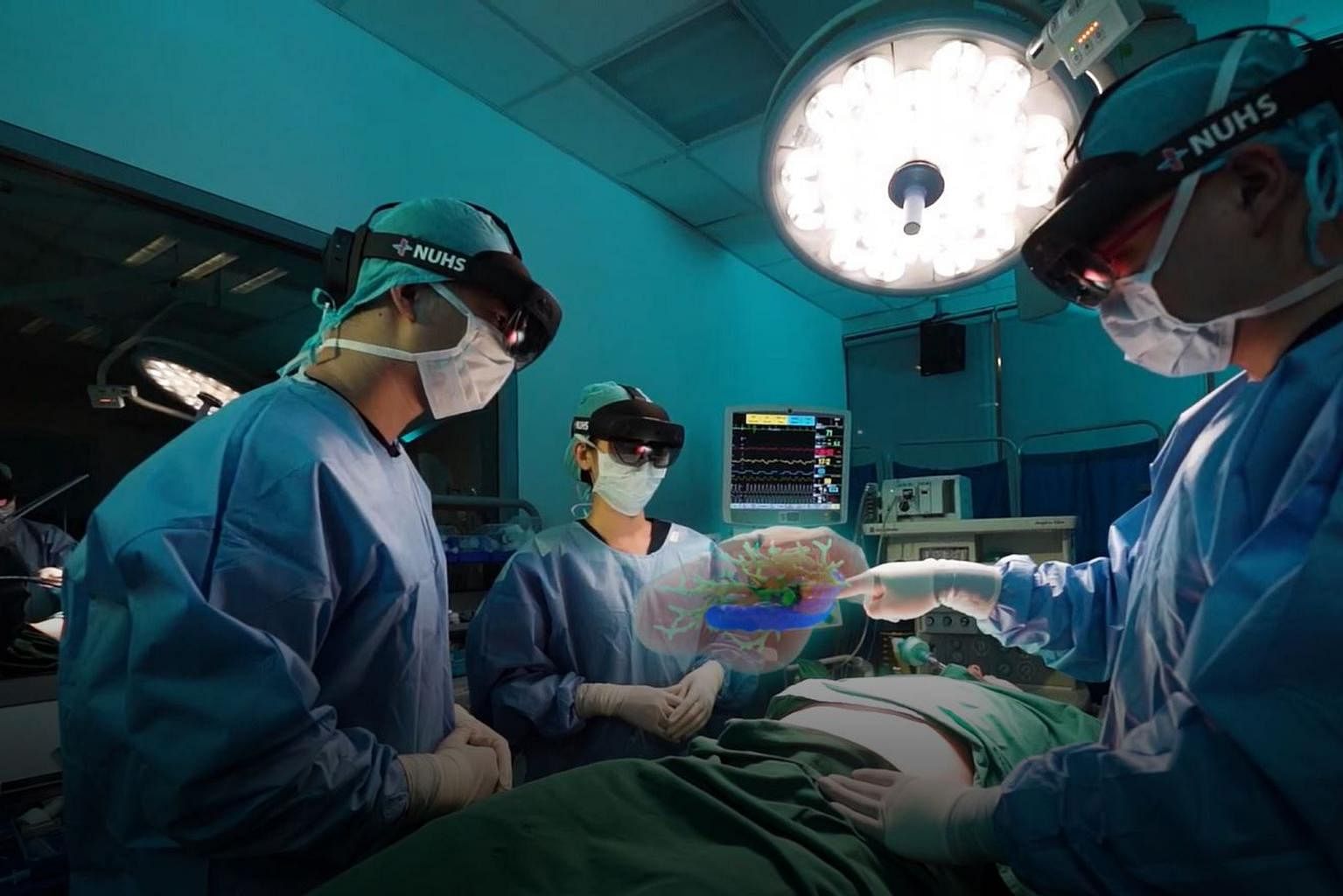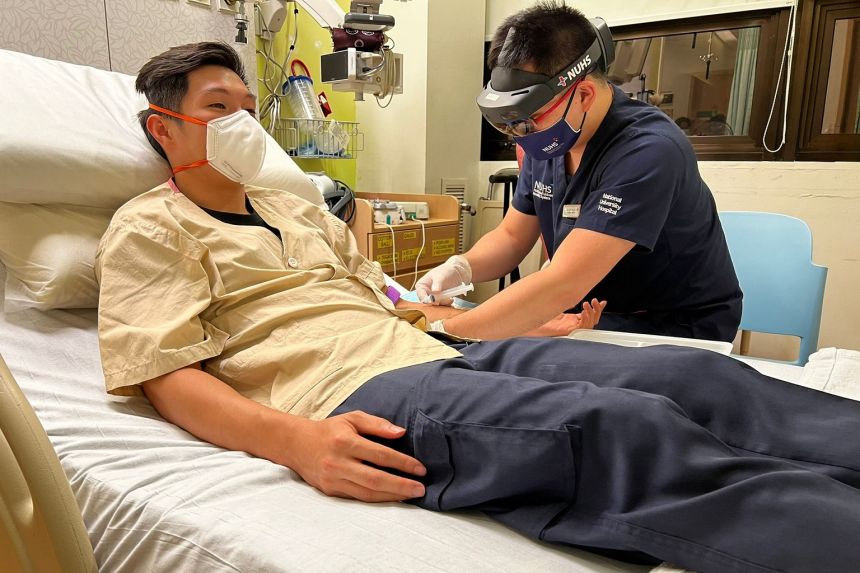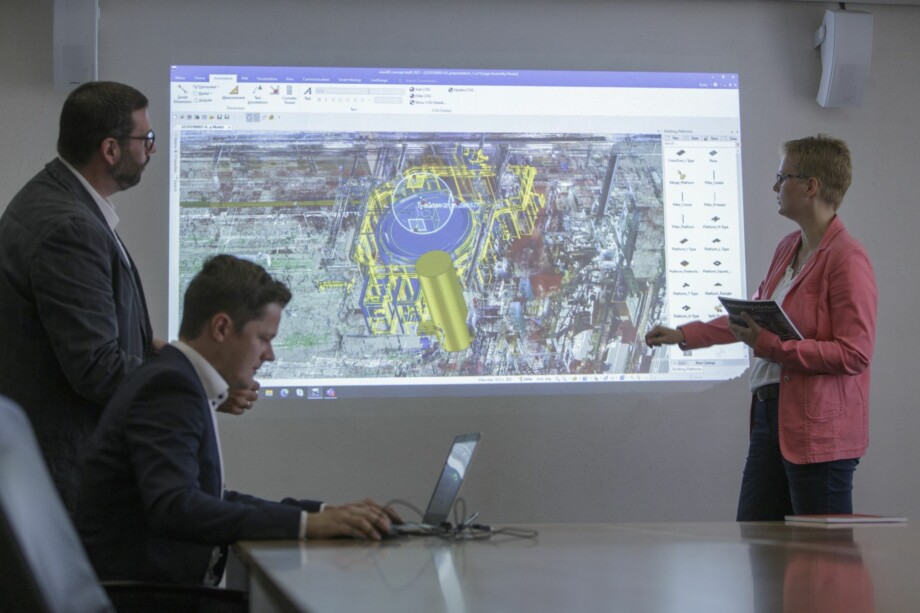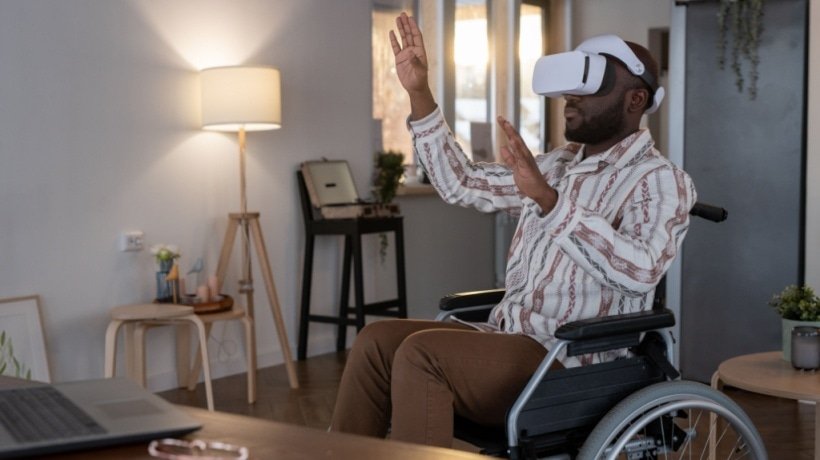The veins of some patients can be difficult to find for drawing blood as they may be small or not easily visible under the skin. But artificial intelligence (AI) and augmented reality (AR) may soon address this issue.
The National University Health System (NUHS) announced on Friday (Dec 3) that a team under it has developed AI software that can be used with Microsoft’s HoloLens 2 AR headset to detect a patient’s veins.
The process involves a healthcare worker, like a nurse, pasting a sticker on the patient’s arm so that the software can identify it and help the headset locate the veins on the arm. Detection is based on how the blood vessels absorb infrared light.
Through the headset’s visor, the nurse can then see digital images of the veins superimposed on the patient’s arm. This works to guide the nurse on where to insert the needle to draw blood or deliver fluids to the patient.
The team that developed the software comprised National University Hospital (NUH) clinicians and National University of Singapore engineers.
The method is still being tested and this could be completed in the coming year.
Currently, if a patient’s veins are hard to detect, an ultrasound machine is used to help find them. But the nurse has to use at least one hand to hold an ultrasound probe over the patient’s arm. Using the AR headset frees up both hands, making it easier for the nurse to draw blood.
NUHS also said on Friday that it is working with telco Singtel to roll out an indoor 5G network at NUH’s operating theatres and wards by the middle of next year, the first announced 5G deployment in a public hospital.

The technology can offer speeds 10 times higher than today’s 4G and allow more devices to be connected. Response times on 5G can also be two times faster than on 4G.
This enables smoother image streaming.
Currently, NUH is testing the use of Microsoft’s HoloLens 2 AR headset for operations.
Wearing the headset, a surgeon can see a 3D hologram of a patient’s brain on the device’s visor. The image can be superimposed on his view of the patient during surgery so he can more quickly and precisely locate a tumour, for instance.
When NUH is covered by 5G signals, the streaming of the holograms to the headset can be lag-free and have less stutter than using 4G or Wi-Fi.
Quelle:
Foto: NUHS announced that a team under it has developed AI software that can be used with Microsoft’s HoloLens 2 AR headset to detect a patient’s veins.PHOTO: NUHS




